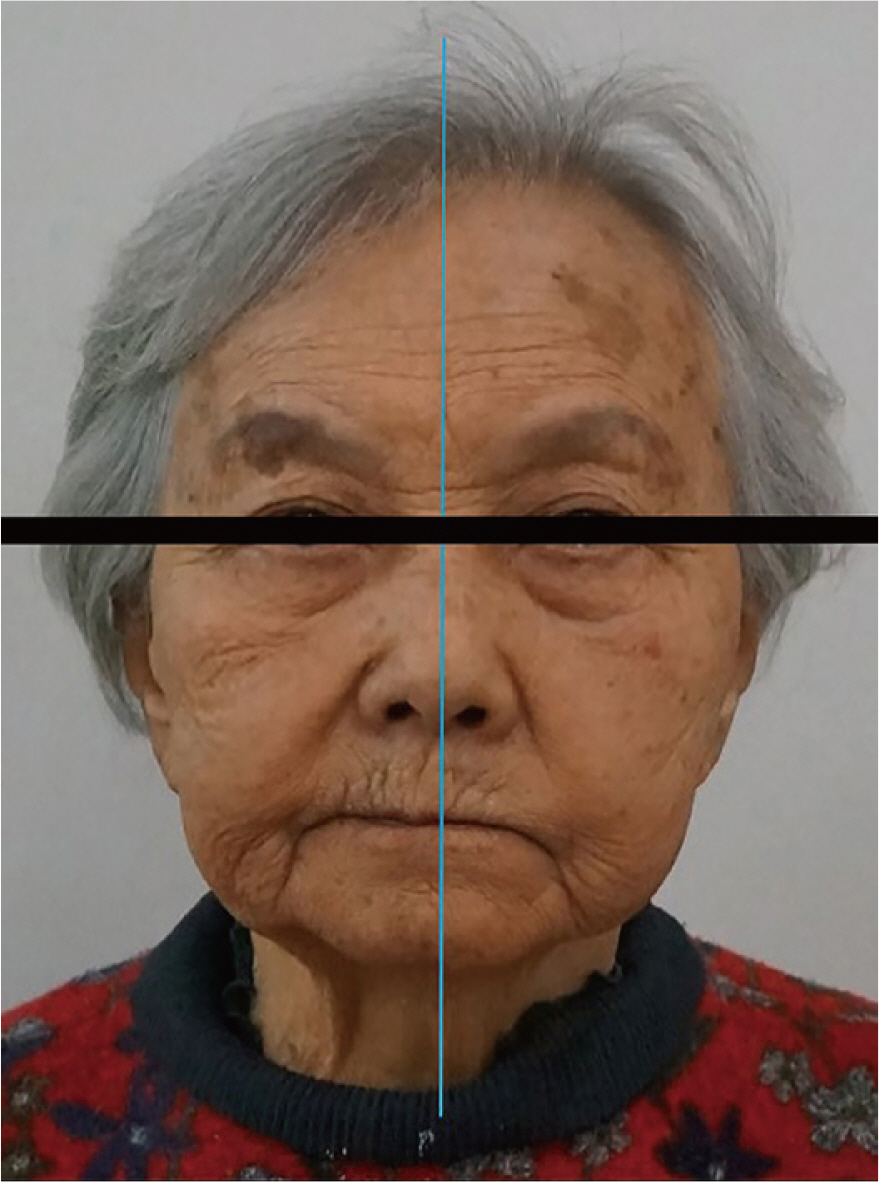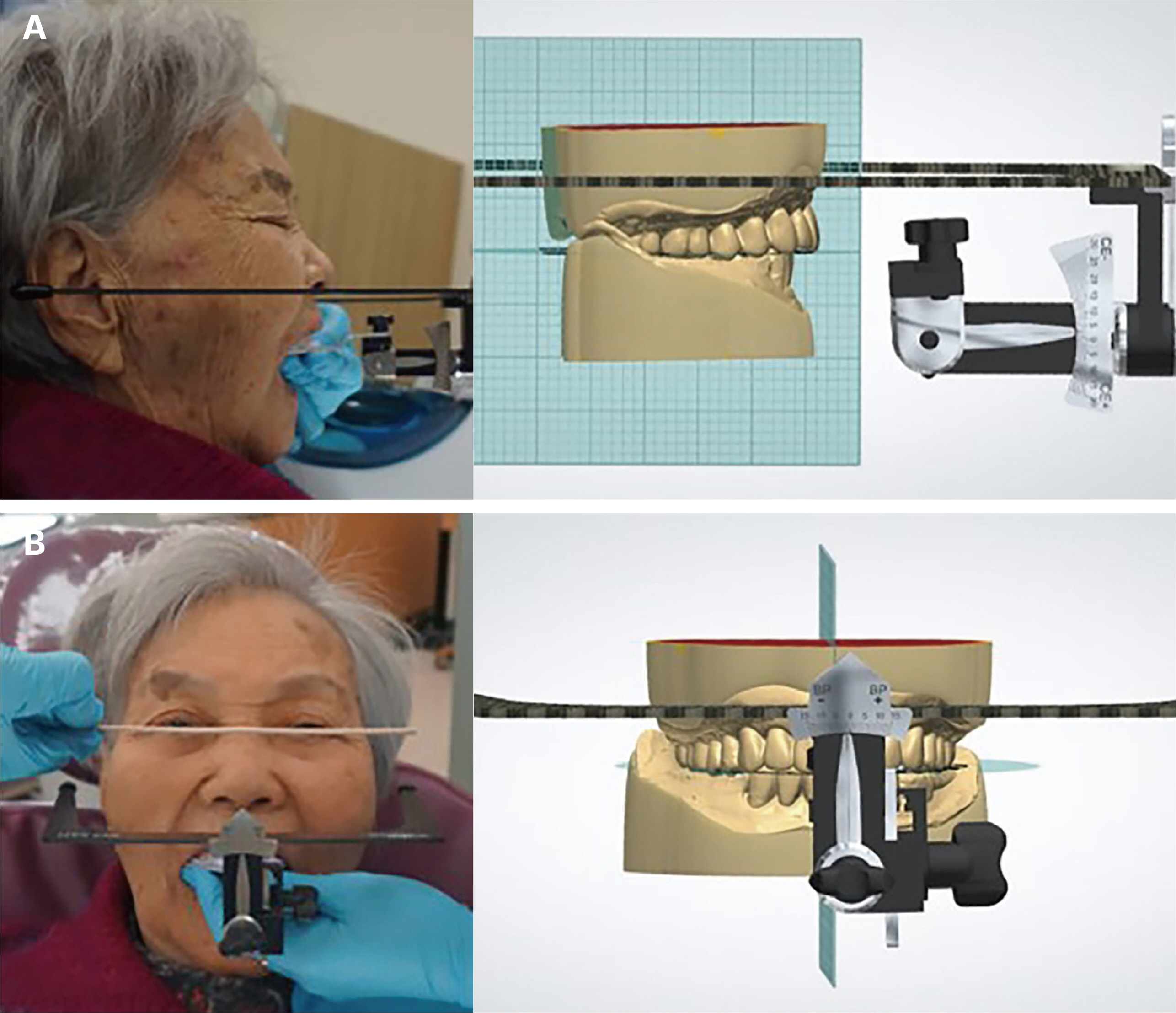J Dent Rehabil Appl Sci.
2023 Sep;39(3):168-175. 10.14368/jdras.2023.39.3.168.
Using treatment denture and digital technology in patient with unstable mandibular movement: a case report
- Affiliations
-
- 1Department of Prosthodontics, School of Dentistry, Chonnam National University, Gwangju, Republic of Korea
- KMID: 2549283
- DOI: http://doi.org/10.14368/jdras.2023.39.3.168
Abstract
- Long-term use of inappropriate prosthesis often results in habitual closure or irregular mandibular movements. In that case, guide to the stable centric position is difficult. Therefore, by using a treatment denture, the muscles and TMJ should be stabilized and the jaw relation should be acquired with the treatment position. Compared to the conventional method, digital technology in fabrica-tion complete denture has the advantage of reproducing a stable tooth arrangement in cases of difficult tooth alignment, minimiz-ing laboratory errors and reducing denture fabrication time. Therefore, in this case, the final denture was fabricated by digitally re-producing the stable treatment position, vertical dimension, and lip support with a treatment denture, and satisfactory results were obtained.
Figure
Reference
-
References
1. Watanabe Y. 2004; Observation of horizontal mandibular positions in an edentulous patient using a digital gothic arch tracer: a clinical report. J Prosthet Dent. 91:15–9. DOI: 10.1016/j.prosdent.2003.10.009. PMID: 14739888.2. Bidra AS, Taylor TD, Agar JR. 2013; Computer-aided technology for fabricating complete dentures: systematic review of historical background, current status, and future perspectives. J Prosthet Dent. 109:361–6. DOI: 10.1016/S0022-3913(13)60318-2. PMID: 23763779.3. Miyazaki T, Hotta Y, Kunii J, Kuriyama S, Tamaki Y. 2009; A review of dental CAD/CAM: current status and future perspectives from 20 years of experience. Dent Mater J. 28:44–56. DOI: 10.4012/dmj.28.44. PMID: 19280967.4. Slade GD. 1997; Derivation and validation of a short-form oral health impact profile. Community Dent Oral Epidemiol. 25:284–90. DOI: 10.1111/j.1600-0528.1997.tb00941.x. PMID: 9332805.5. Yoshidome K, Torii M, Kawamura N, Shimpo H, Ohkubo C. 2021; Trueness and fitting accuracy of maxillary 3D printed complete dentures. J Prosthodont Res. 65:559–64. DOI: 10.2186/jpr.JPR_D_20_00240. PMID: 33980786.6. Mercado MD, Faulkner KD. 1991; The prevalence of craniomandibular disorders in completely edentulous denture-wearing subjects. J Oral Rehabil. 18:231–42. DOI: 10.1111/j.1365-2842.1991.tb00052.x. PMID: 1856775.7. Gilboe DB. 1983; Centric relation as the treatment position. J Prosthet Dent. 50:685–9. DOI: 10.1016/0022-3913(83)90211-1. PMID: 6580438.8. Inada M, Yamazaki T, Shinozuka O, Sekiguchi G, Tamamori Y, Ohyama T. 2002; Complete denture treatments for a cerebral palsy patient by using a treatment denture. A case report. J Med Dent Sci. 49:171–7.9. Schweiger J, Güth JF, Edelhoff D, Stumbaum J. 2017; Virtual evaluation for CAD-CAM-fabricated complete dentures. J Prosthet Dent. 117:28–33. DOI: 10.1016/j.prosdent.2016.05.015. PMID: 27492983.10. Jones PM. 1972; The monoplane occlusion for complete dentures. J Am Dent Assoc. 85:94–100. DOI: 10.14219/jada.archive.1972.0293. PMID: 4503599.11. Yoshidome K, Torii M, Kawamura N, Shimpo H, Ohkubo C. 2021; Trueness and fitting accuracy of maxillary 3D printed complete dentures. J Prosthodont Res. 65:559–64. DOI: 10.2186/jpr.JPR_D_20_00240. PMID: 33980786.
- Full Text Links
- Actions
-
Cited
- CITED
-
- Close
- Share
- Similar articles
-
- Utilization of digital technology in fabricating mandibular implant overdenture for skeletal class II edentulous patient: A case report
- Full mouth rehabilitation in edentulous patient with unstable mandibular position using flat table treatment dentures and CAD-CAM technology
- Digital interim immediate denture fabrication and implant-supported removable partial denture fabrication after multiple teeth extraction in patient with chronic periodontitis: a case report
- Posterior rehabilitation considering mandibular movement with digital facebow transfer and virtual articulator: A case report
- Full mouth rehabilitation in partially edentulous patient with an unstable mandibular position












